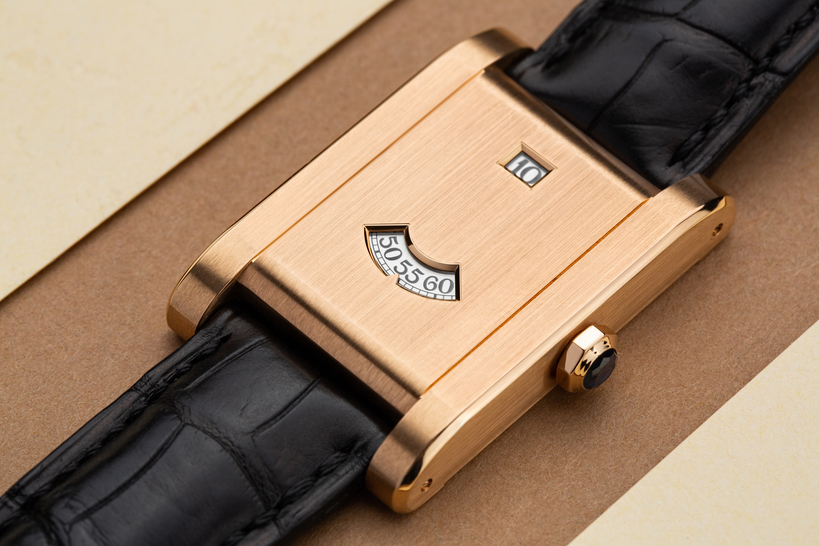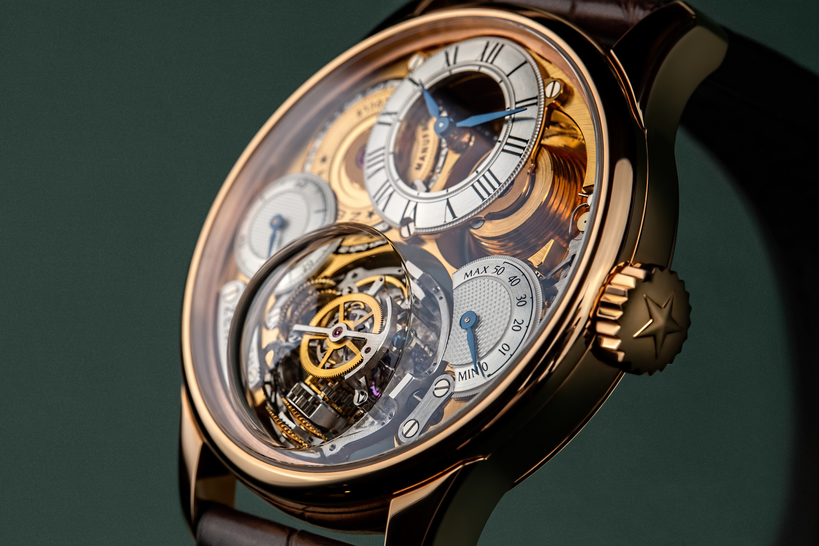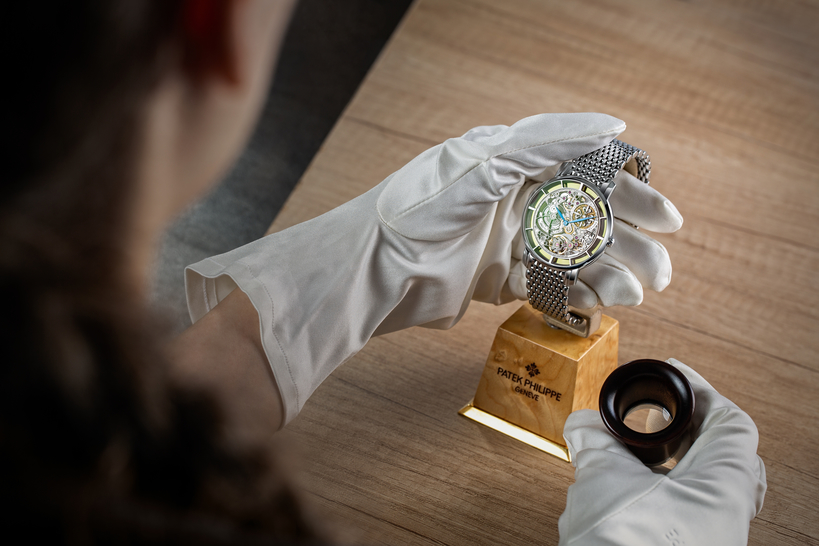The oldest meteorite has been used to make a watch dial.
In 1906, the oldest known meteorite was discovered in Sweden's Norrbotten County near the border with Finland. Scientists believe it's 4.6 billion years old and reckon it landed on Earth about one million years ago. The so-called Widmanstätten patterns seen on slices of the meteorite made of 90% iron and 8.4% nickel gradually formed over several million years.
These lamellae (bands) appear as metal crystallizes in the extreme cold of outer space. This unique pattern can now be seen on the dial of De Bethune's DB28XP Meteorite watch. The designers at De Bethune didn’t stop at using Muonionalusta meteorite to create the dial. Its surface has also been decorated with a 'starry sky' using the Microlight engraving technique. The company invented this innovative technology in 2007, which can be seen on watches such as the DB28XP Starry Sky from 2020.
The polished pink gold hands also happen to be borrowed from the same model. Other aspects of its design have been retained: the crown at 12 o'clock and the floating lugs patented in 2006, which make the watch a perfect fit for every wrist. The deep cosmic blue dial has been spotted with tiny white-gold pins driven into it by hand.
De Bethune also offers future watch owners the chance to individually choose which constellation will be plotted on the dial. Not only can you pinpoint and agree which geographical coordinates on the sky chart you want with the brand's master watchmakers, you can also pick your preferred observation time. The choice of matte anthracite zirconium for the 43 mm case also clearly reflects the company's passion for using new materials.
The materials may be unique, but designers of the new version of the DB28XP couldn't help peeling them back to show off the beautiful DB2115v7 caliber. The patented titanium balance wheel embellished with white-gold adjustment screws can be viewed through an opening at 6 o'clock. Other De Bethune innovations this movement features are a hairspring with a flat terminal curve and a self-regulating twin barrel, which reduces friction to provide a six-day power reserve.





